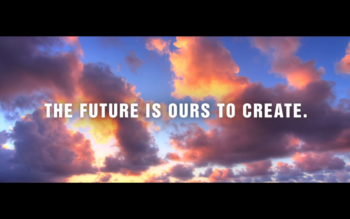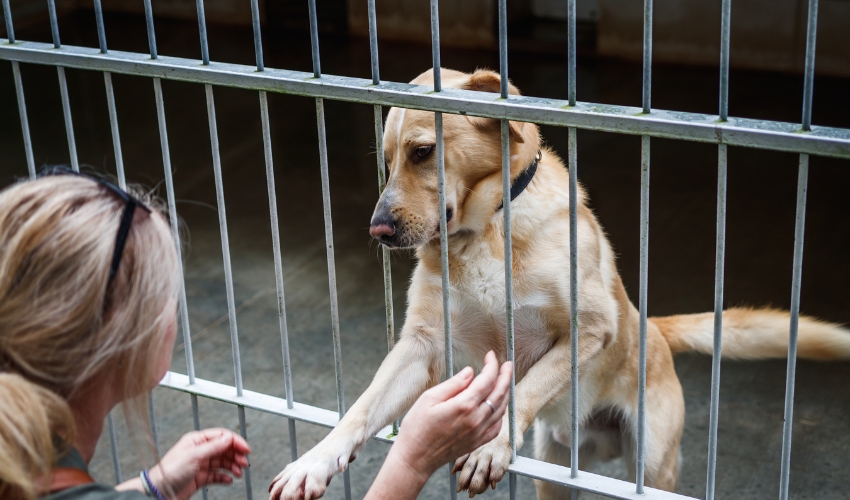“We cannot predict the future, but we can invent it.” — Dennis Gabor
When I got into animal rescue 10 years ago, I never would have imagined that it would change as much as it has during that short timeframe. But as I look back on these 10 years, I smile knowing that more shelters and rescues are working together, more volunteers are spending their time, resources and money helping one another save animals, and less animals are euthanized each year simply because they are in the wrong location.
 I am sure that for animal rescue professionals that have been around for decades longer than I have, they are smiling to themselves as to how little I know about what transpired for the decades before I stumbled into this industry. We have all been told something along the lines of “when I was your age…” by an older and likely wiser relative only to groan and roll our eyes in disgust as to how old people just do not get it. Whether you have been in animal rescue for 20 years, 20 months or 20 days, it is continuing to evolve and change and morph and those that are not paying attention could get left behind, though that may not be a bad thing after all.
I am sure that for animal rescue professionals that have been around for decades longer than I have, they are smiling to themselves as to how little I know about what transpired for the decades before I stumbled into this industry. We have all been told something along the lines of “when I was your age…” by an older and likely wiser relative only to groan and roll our eyes in disgust as to how old people just do not get it. Whether you have been in animal rescue for 20 years, 20 months or 20 days, it is continuing to evolve and change and morph and those that are not paying attention could get left behind, though that may not be a bad thing after all.
In the past decades, animal shelters received large numbers of animals through owner surrenders or through strays being turned into their organization either by the general public, or animal control officers and law enforcement. Many animal shelters were not community focused or rescue friendly and served simply as temporary housing for the final seven days of an animal’s life. But thanks to tremendous efforts by organizations and volunteers across the country, these types of situations are very rare in the U.S., and animal shelters are finding that there are less strays and owner surrenders due to their proactive spay and neuter programs, community outreach and training programs and innovative concepts like re-homing which helps find animals new homes when their owners can no longer care for them.
According to the American Pet Products Association statistics, over 60% of households in the U.S. have at least one dog and almost 50% have a cat. That’s over 90 million cats and another 90 million dogs as pets just in the U.S. alone and the trend is for many households to adopt several animals. Pair that with the decline in animals that are not  spayed or neutered (thanks to awesome low cost programs for spay and neuter and a focus on the importance of spay and neuter through education and community engagement), and you’ll start to notice something…the laws of supply and demand are at work here and eventually the demand will outpace the supply thus forcing the market to adjust and change. In the most recent decades and still today, there is more supply than demand in certain geographies of the country and as a result, healthy companion animals are euthanized simply due to being in the wrong location. This was the reason I created Doobert in an effort to help organize the volunteers and organizations working to balance out the supply and demand by transporting these animals safely from a location of oversupply to one where there is more demand.
spayed or neutered (thanks to awesome low cost programs for spay and neuter and a focus on the importance of spay and neuter through education and community engagement), and you’ll start to notice something…the laws of supply and demand are at work here and eventually the demand will outpace the supply thus forcing the market to adjust and change. In the most recent decades and still today, there is more supply than demand in certain geographies of the country and as a result, healthy companion animals are euthanized simply due to being in the wrong location. This was the reason I created Doobert in an effort to help organize the volunteers and organizations working to balance out the supply and demand by transporting these animals safely from a location of oversupply to one where there is more demand.
“What’s next in animal rescue?“
Animal shelters and rescue organizations are businesses like any other legal entities in the U.S. They may operate as charities focused on a mission, but in the end they are still a business and need to have a business model and recurrent funding to stay afloat. Many of these organizations have relied on “free inventory” where the animals coming to their shelter or rescue were never procured but simply requested. They didn’t have to shell out any money to acquire the animal, and could charge fees during the adoption process to offset their overhead costs and the costs they put into the care and medical needs of the animal. But if the supply of animals is starting to diminish, and the demand is remaining steady, the question then is what do they do to make up for the shortfall? How can these organizations remain solvent and focused on their mission when their core source of revenue (not including donations) is falling apart right in front of their eyes?











